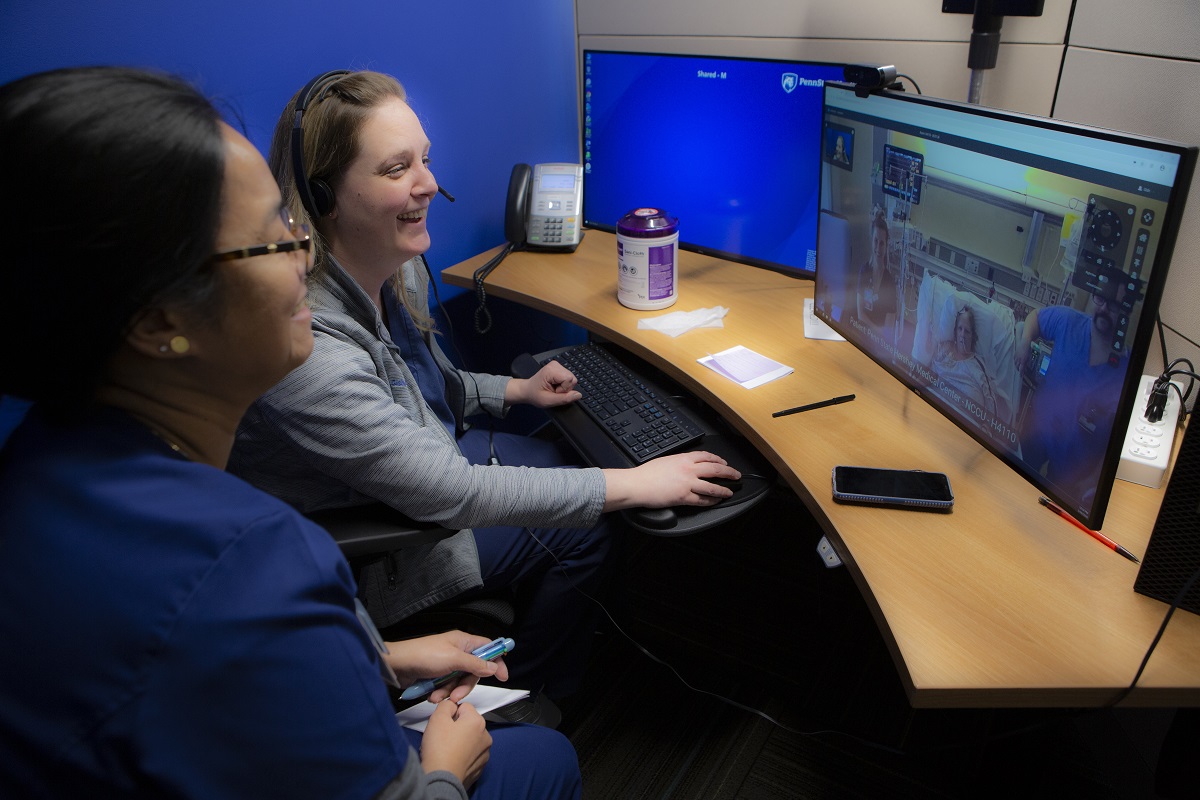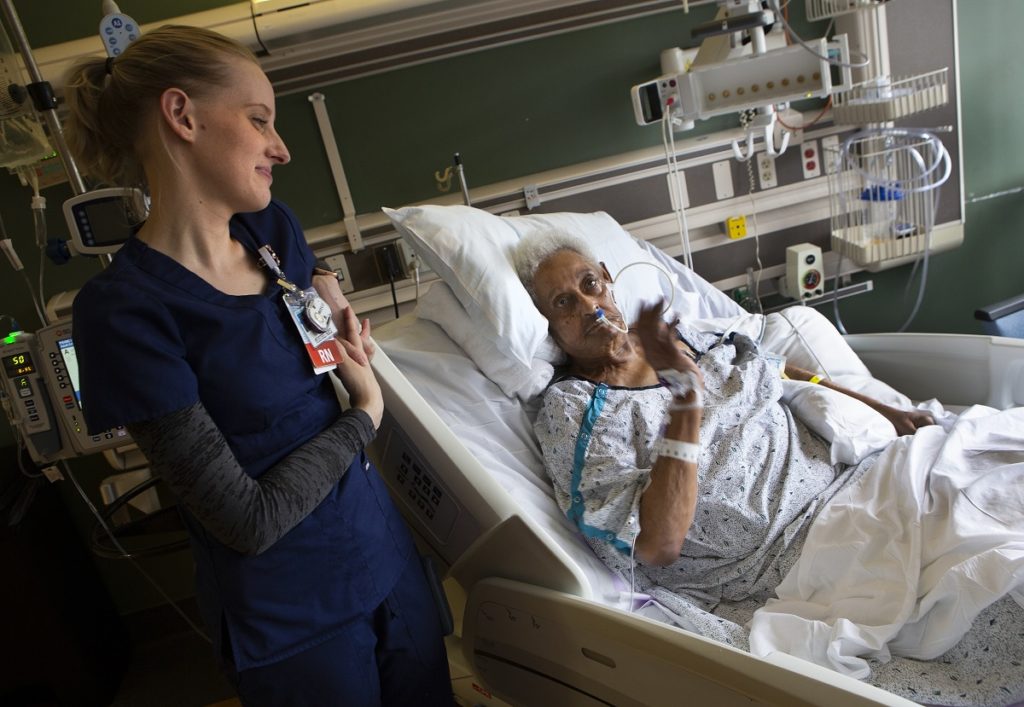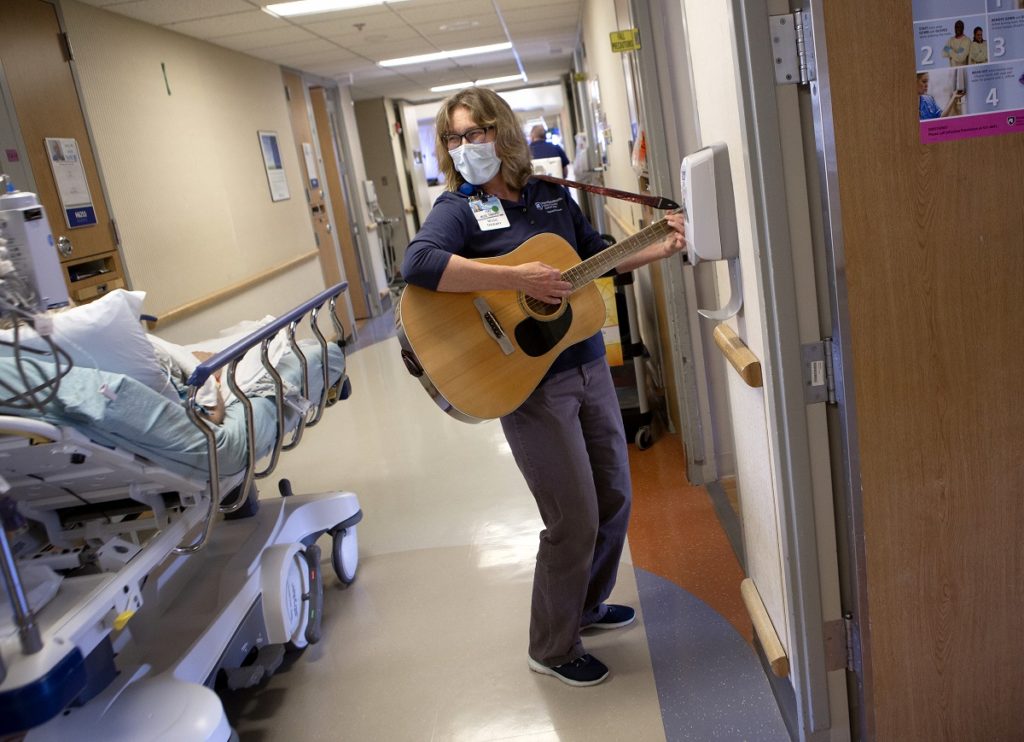The next best thing: Hospital staff aims to shorten distance between patients, loved ones

By Carolyn Kimmel
When Amy Wentz encountered a patient whose loved one couldn’t accompany her past the door when she arrived for surgery last week, the operating room aide at Hershey Medical Center knew some quick thinking was in order.
“The woman was extremely upset and was thinking of cancelling her surgery,” said Wentz. “She told me she had an extreme phobia of death, and everything going on right now was making it even scarier.”
To calm the woman, Wentz turned to a new tool – Facebook video chat.
“I assured the daughter that I would stay with her mother until surgery, and then I sat with the patient and reassured her,” Wentz said. “Just that little touch of empathy made a world of difference.”
A hospital stay can be is stressful for patients and their families under the best of circumstances, but add in a no-visitor policy and a constant stream of unsettling national news, and anxiety can heighten greatly.
In return, staff members are getting creative with virtual ways to bridge the gap between hospital rooms and living rooms, such as Facetime and Zoom, and improvised activities to add some cheer to daily life on the floors, like a game of Yahtzee from a distance.

Registered nurse Sara Myers, left, looks on as stroke patient Gracie Banks waves to her daughter, thanks to tele-ICU equipment now being used for virtual visits.
“These are uncharted times, and it’s been really hard to watch this unfold and know that people are lonely in a time when they are already hurting,” said Misty Bowman, manager of patient and family-centered care at Hershey Medical Center.
At Penn State Health St. Joseph, patient advocates are going the extra mile – literally – walking from floor to floor to give messages to patients from their loved ones. They have iPads for language translation and are happy to help patients learn how to use their own cell phones to stay connected virtually.
“I hear a lot from families that they’re concerned that they can’t be next to loved ones, but they’re happy we are putting these processes in place to keep them safe while they are in here,” said Diana Santiago-Berry, manager of patient advocacy and interpreter services at St. Joseph Medical Center. Families feeling distressed and needing someone to listen are being invited to call the hospital’s chaplain line, she added.
In Hershey Medical Center’s intensive care unit, patient rooms are equipped with a wall camera and monitor that staff use to monitor patients, but for the first time it’s being used to connect doctors with families during their hospital rounds and to reunite family members after a surgery.
“We had an 18-year-old patient whose parents couldn’t be present for surgery, but we could unite them afterward. There wasn’t a dry eye in the room,” said Kelly Rotondo, telehealth team member. “Everybody has fully embraced this new use of our technology, from physicians to advanced practice providers to staff nurses. We’ve gone five years into the future this past week.”
Patient education is also occurring in new ways. Patients with a left ventricular assist device, or LVAD, are connecting with nurse educators through Facetime to receive needed instruction on the mechanical pump, Bowman said.
The importance of the virtual visiting capability took on a whole new level of meaning when Shanne Keeney, director of Patient and Guest Experience, received a request for a hospital iPad to connect a COVID-19 patient with family for a last visit. The patient passed away the following day, she said.
To help staff relieve stress, Hershey Medical Center’s music therapy program has expanded staff support with guided imagery and relaxation sessions with instrumental guitar over lunch breaks or at nurses’ stations, said Jan Stouffer, board-certified music therapist. Individual patient music therapy continues as well, and there are plans to expand the program’s reach.

Jan Stouffer, a board certified music therapist with Penn State Health Milton S. Hershey Medical Center, sings to patients in their rooms and one being rolled down the hall on the six floor of the Medical Center during an environmental music therapy session on Thursday, April 2, 2020.
“Music can create a calming space,” Stouffer said. “Singing lyrics that are meaningful can be strengthening or can bring back memories of a positive time in someone’s life.”
The smiles on patients’ faces are lifting staff spirits as well. “These efforts are empowering us to continue to help patients, and it’s a good feeling for everyone,” Bowman said.
If you're having trouble accessing this content, or would like it in another format, please email the Penn State College of Medicine web department.
